Shadow of the Tomb Raider
The final part of the rebooted Lara Croft origin story is an fantastic game that might well be my highlight of the year.
I’ve read many criticisms of Shadow of the Tomb Raider, and I think they are all wrong. The third instalment of the Tomb Raider reboot is an excellent game that delivers on everything it promises and even surprises in a couple of places. Shadow of the Tomb Raider is the best release in an already excellent trilogy of games. It is also much maligned, mostly for stupid reasons that I will also address in this review. But first, let’s talk about how I got to love this series and what I like about this particular game. If you’d rather want an overview and a score, you can jump to the ƒΛḄ scoring table right away.
It’s no secret that I’ve been in love with the Tomb Raider reboot from the very first day of release of the 2013 game. I’d been a fan of the series ever since I’ve played the original Tomb Raider on a friend’s PlayStation in the winter of ‘96, but Rhianna Pratchett’s take on the character of Lara Croft is the one that completely drew me into the series. Before, Lara to me was simply the most kick-ass girl in video games – maybe in all of pop culture – but Pratchett managed to turn her into a nuanced, believable character that solicited the whole range of human emotions from me. I laughed, gasped and cried in despair with Lara as we fought our way through the horrors of Yamatai. And we grew together, as characters.
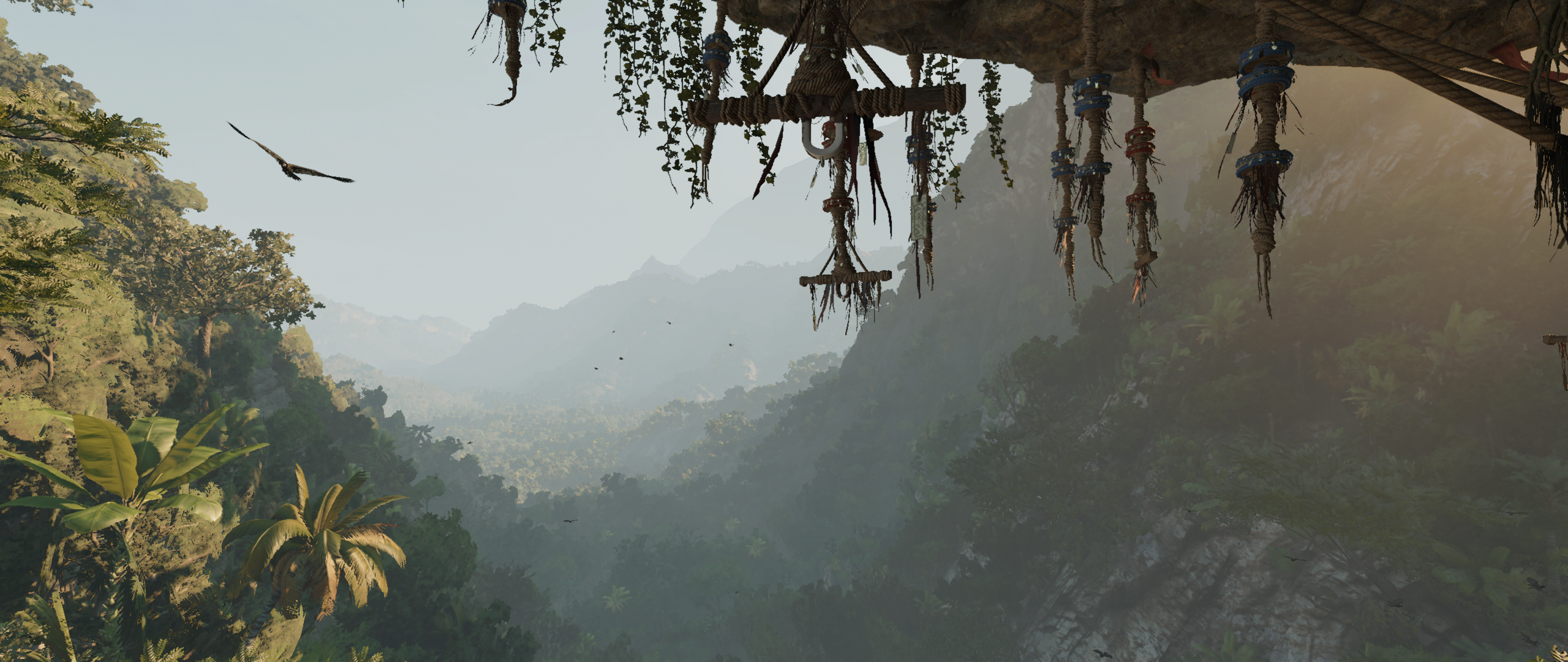
Five years later, I was looking forward to the end of Lara’s origin story. After raising the stakes so much in the sequel, what could the guys at Squenix bring to the table that would elevate this game over the other two and make it worthy of concluding this part of Lara’s story?
The joke making the rounds in the gaming press is that Squenix has been touting Lara finally “becoming the Tomb Raider” with every subsequent game beyond the 2013 surprise hit. And in some respects, that’s actually what happened. You can draw a direct through-line from 2013s Tomb Raider to 2015s Rise of the Tomb Raider and right into the first moments of Shadow of the Tomb Raider that shows Lara growing up from an innocent teenager into a ruthless and seasoned, yet still kind-hearted, adventurer. People laugh about how she cries over killing a doe in the first game and then immediately goes into a murder spree, slaughtering men left and right. But I’ve been on this journey with Lara, every step of the way, and I think I understand.
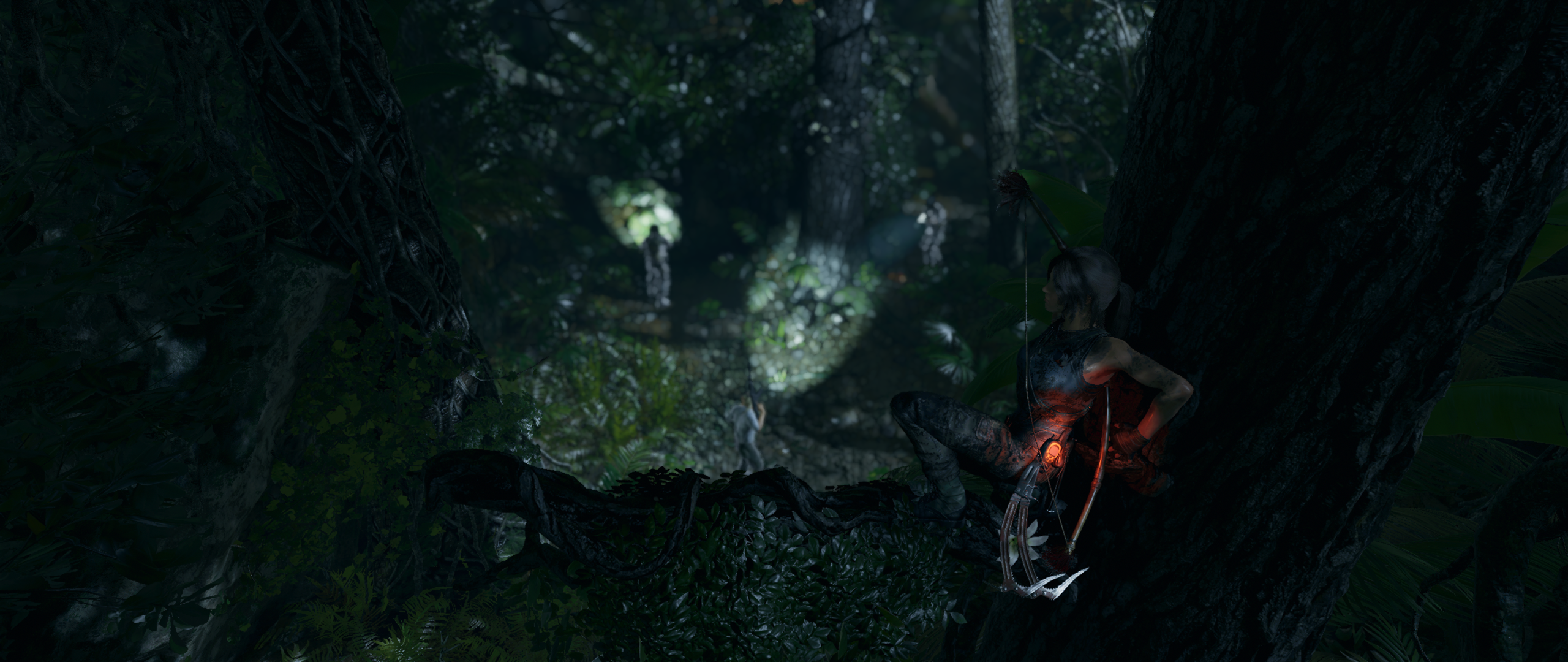
In cinematic games like these, you’re either with the main character throughout, or you fall off the wagon. For my part, I’ve loved the first two games and couldn’t wait to see what comes next.
Well, let me tell you, they dial it up to eleven in this one. Right from the start, Lara is an experienced adventurer; much like when we first meet Dr. Jones in Raiders of the Lost Ark. She certainly knows about raiding tombs. And that’s what turns out to become her greatest weakness, but also her salvation in this game. Because Lara raids the ultimate tomb and finds an artifact of such power that it will destroy the world. And then, just like in Raiders, the bad guy takes it away from her. This leaves Lara in an impossible situation: she literally has to save the world, but has no idea how to do it. Yeah, it’s the Maya apocalypse and it’s populated with hokey cultists who look like they walked right off the set of Temple of Doom but that doesn’t take away anything from the fun. If anything, it heightens it. In many ways, this is what Temple of Doom should have looked like.
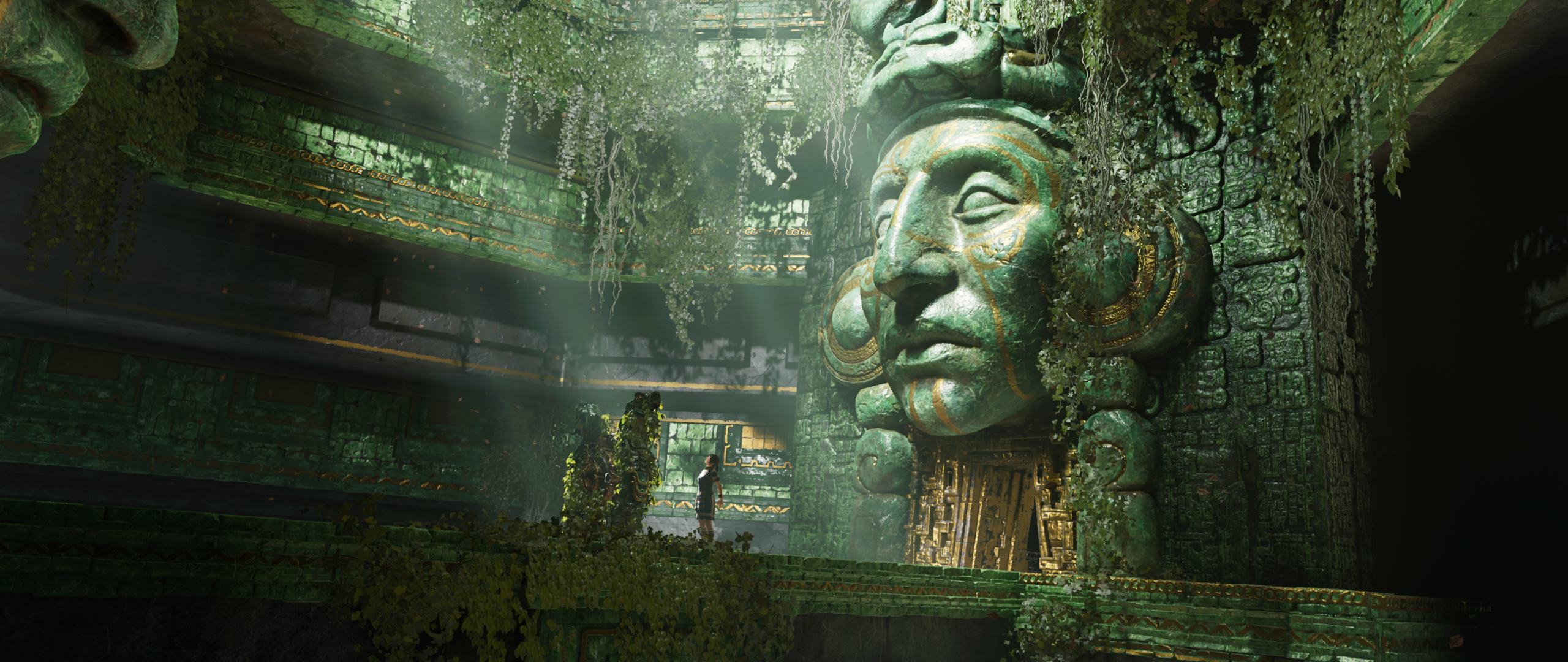
And this is where we get to a lot of the idiotic criticism that Shadow of the Tomb Raider had to endure in the gaming press. I mean, sure, you could criticise this game’s narrative on overall realism. What with the bloody Maya-Incan-Aztec-Templar-Conquistador doomsday cult, solar powered ancient machinery and dagger-and-magic-box-that-gives-me-actual-god-powers gimmick. Sure, we could use this review to point out some glaring colonialist problems with the profession of tomb raiding – completely ignoring the actual colonial narrative that’s told in the game’s item descriptions and flavour text. Or, here’s an idea, you could just take it for what it is: a fucking pulp fiction action-adventure. Because in real life, archeologists don’t use bull whips or ice axes. And they certainly don’t pack heat. No shit.
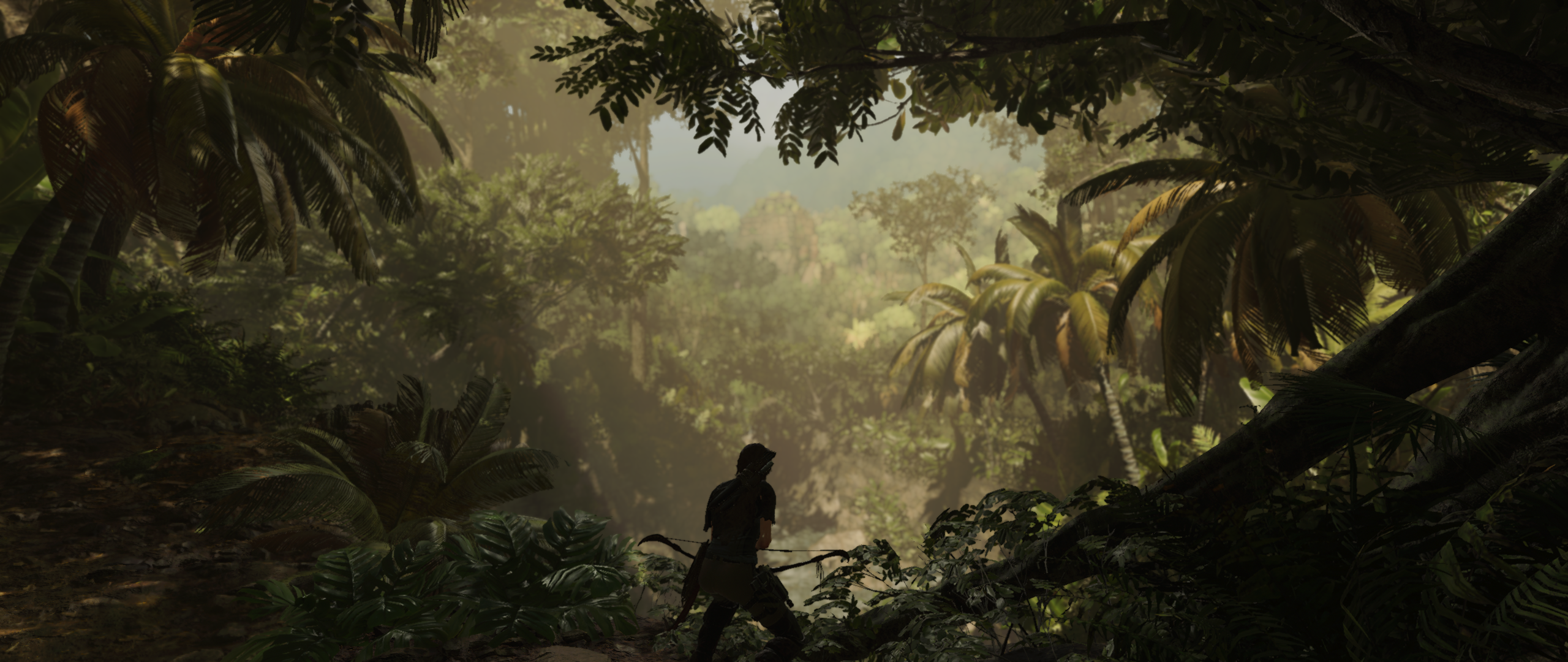
This game goes to the length of actually pointing out that the developers have consulted historians and linguists to make the world as immersive and true to their vision of what a game set in the jungles of Mesoamerica and Peru should be, as possible. And they welcome people from all genders, ethnic backgrounds and cultures on the very first screen you see when you start the story. And what do they get for their troubles? Backlash from some smartarse gaming critics too stuck-up to enjoy an awesome adventure when im bumps them in the nose.
It’s almost laughably ironic. Here we have the purest Twitter feminist fantasy – a woman with a survival knife and a bow, slaughtering toxic masculinity by the dozens – and the producers of this game still can’t catch a break for their death scenes. Yes, according to one respected gaming site, these are borderline torture porn. Never mind the Trinity mercenary I’ve left strung up in the jungle canopy, bleeding to death from three stab wounds in the heart and a severed jugular. All the important people in this game are female and Lara’s main sidekick, Jonah, while buff and rugged-looking, is an absolute pussy. That’s refreshing and fun writing and I’m amazed it isn’t celebrated more.

Of course, I never bothered with any other reviews. As soon as the game was finally out and I had a free weekend, I jumped right in. And I never really stopped thinking about the story until I had finished it. Don’t get me wrong: I haven’t completed the game. I’ve barely finished the main story and I plan to jump back into it with New Game Plus to farm out every nook any cranny of this beautiful thing. Probably right after I’ve played through the other two games again… But I do know that I love it!
The graphics are gorgeous, Camilla Luddington’s acting is spot on, and the new jungle fighting mechanics are a world of fun. The new Tomb Raider games always had stellar archery mechanics and decent gunplay, but the new hide-and-seek stuff had me entertained for hours. Never mind the climbing, which they’ve massively ramped up and the absolutely gorgeous locations – the level designers on this game deserve an actual medal. And then the tombs… the tombs are so good. They all look different and have their own unique flavour and the main story locations are better than anything Hollywood could come up with. I mean it. This game has sets that blow the hell out of any billion dollar movie I’ve seen in the last twenty years. This is some serious good shit! In more than 35 hours with this game, I never got bored once. That’s an achievemnt of titanic proportions when it comes to video games and something that Shadow of the Tomb Raider has in common with the first instalment in the reboot series and not many other games beyond that.
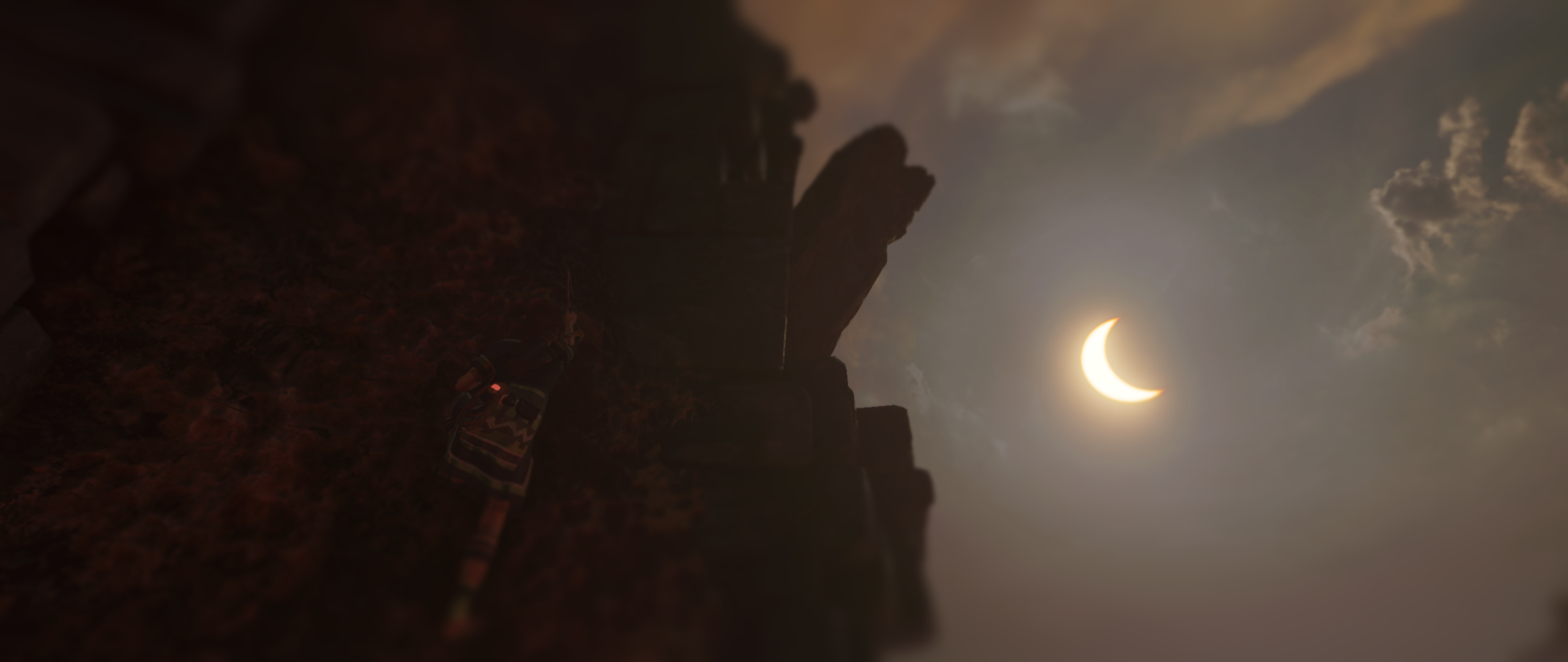
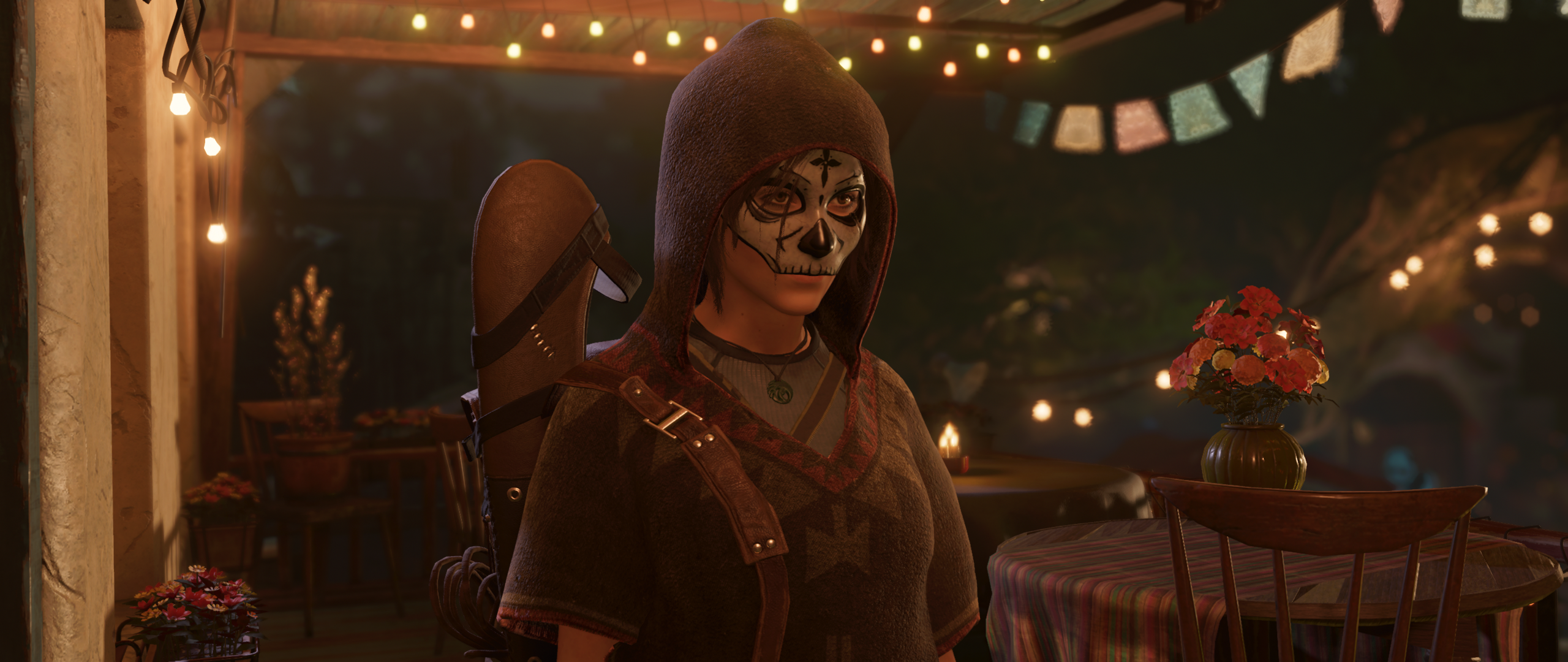
And I haven’t even mentioned the new hub locations and crowd scenes. Very early into the game, Lara visits a Day of the Dead celebration in Mexico and remarks that she “isn’t good with crowds”, a clear hint at the fact that Tomb Raider, in its long history, has always concentrated on action in remote locations rather than interactions with people. But this game pulls off the crowds scenes. And does them really well, at that. They are woven neatly into a story that, while at points quite predictable, is fun and very engaging from begining to end. I very much enjoyed my final reckoning with the high ranking members of Trinity and even some lower down henchmen that I’ve had a grudge with ever since Siberia.
Shadow of the Tomb Raider is a game that knows what it wants to be and goes all in, trying to achieve its goal. That is commendable. If you don’t like linear games or you don’t have the patience for story, it’s probably not the game for you. But if, like me, you have given up on most of TV and a lot of cinema a while ago and you’re willing to suspend some disbelief in order to be entertained all night by video games, then this is probably the blockbuster you’re looking for. It has action, it has story and it has drama. There’s climbing, puzzles, shooting and talking to people. You can upgrade your guns, bows and knife, learn new survival tricks and discover secrets. And all along the way, you’ll learn something about ancient cultures, modern weaponry and Lara’s peculiar aristocratic roots.
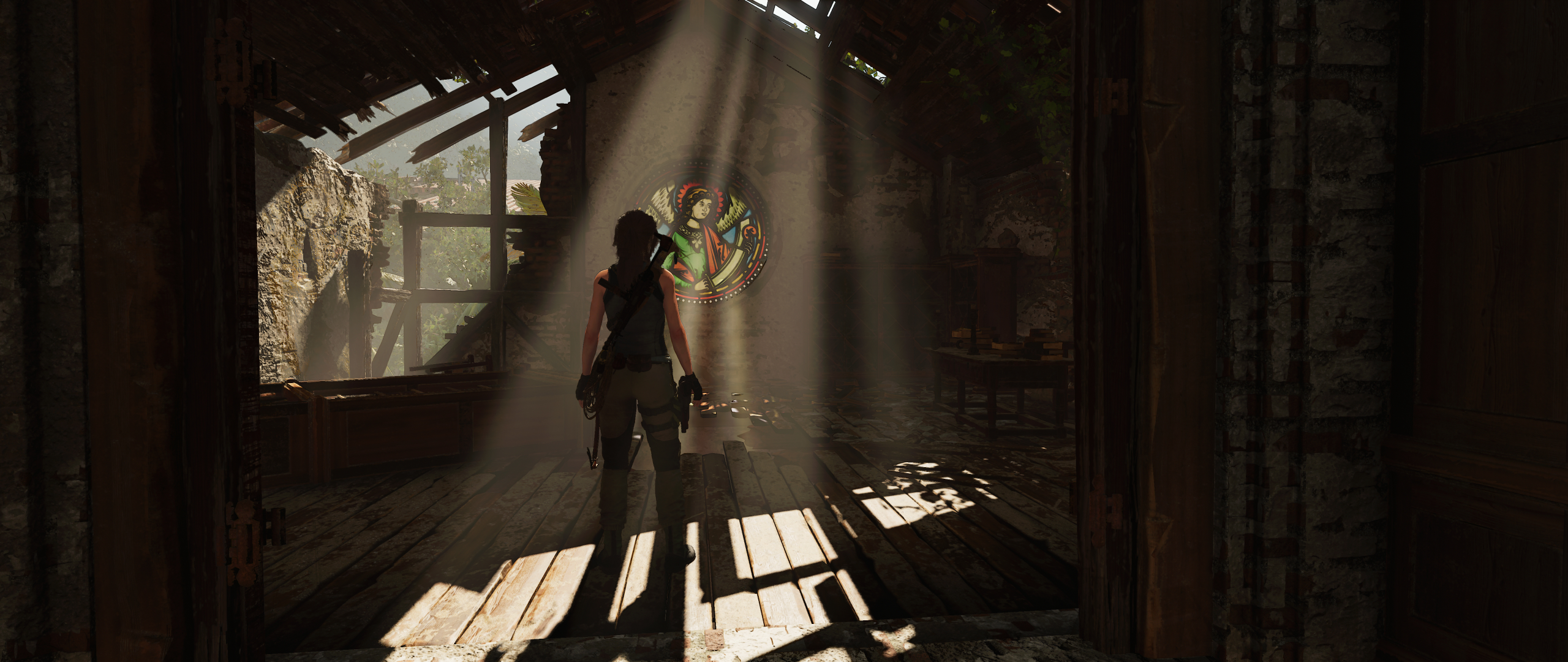
Yes, it isn’t the most highbrow or nuanced of storylines. But the technology that went into making this is extremely sophisticated and people spent an amazing amount of attention to detail on this game. And most importantly, its heart is in the right spot. If you’re one who’s always looking for adventure, no matter the odds, who’s asking what things are about, who’s never giving up, then you’ll be happy playing this game.
In short: The first two games will have shown if you are a survivor who can brave the odds. If you are, what are you waiting for? The silver box of Ix Chel is waiting for you. If you aren’t sure, start with 2013s Tomb Raider and become a survivor. Then brave the cold darkness of Siberia. Only when you’ve survived the Oni and the Deathless Ones should you try and burden yourself with saving the world as the Tomb Raider. Take the journey, one step at a time, and savour the experiences along the way. Believe me, it is worth it. You won’t have more fun in any other AAA game on the PC this year, I reckon.
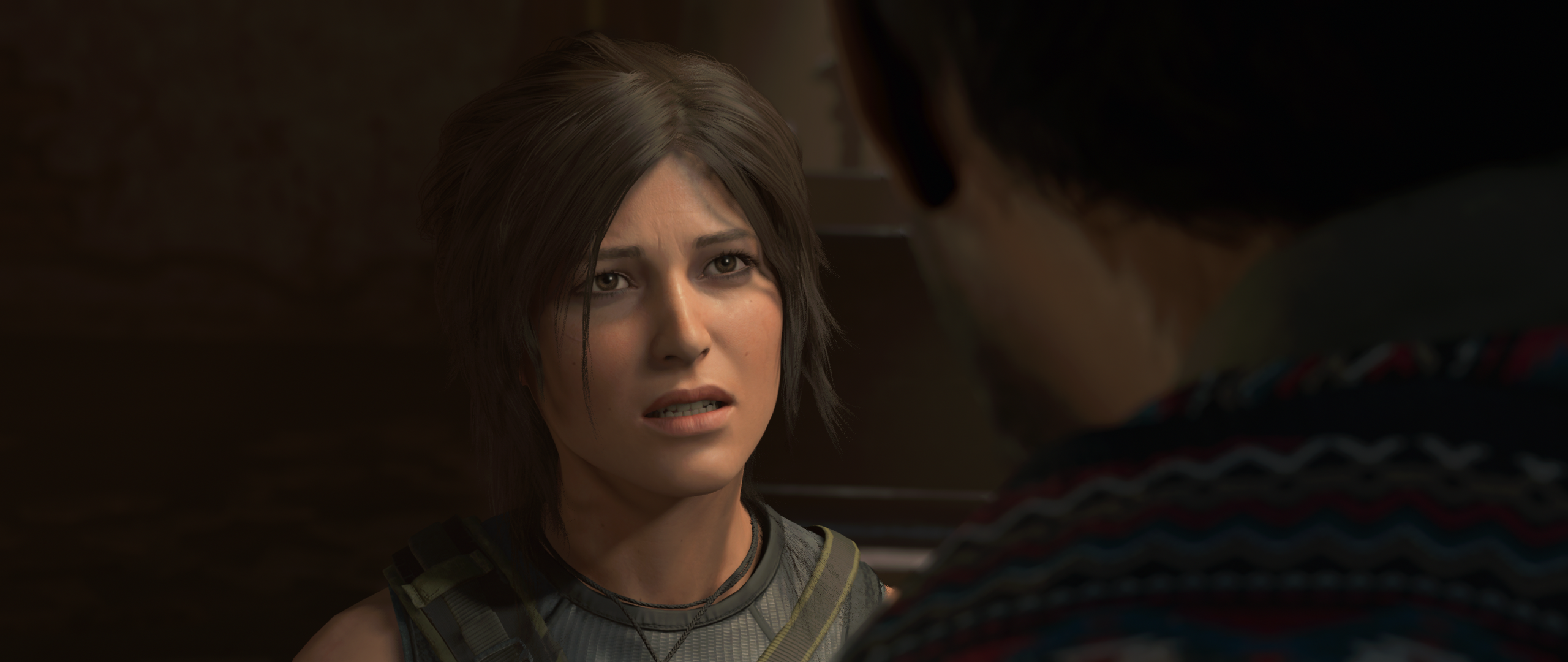
Scoring • Shadow of the Tomb Raider • ƒΛḄ 91/100
Shadow of the Tomb Raider is incredibly polished. I noticed very few bugs in my 35+ hours with the game. I’ve also had a lot of fun from start to finish – it’s a wild rollercoaster ride all the way through. I play these games for the story and the cinematic experience and the third instalment of the rebooted series definitely delivers on this and quite possibly beats even the first game. There’s more climbing to do, the jungle fights are more fun than fighting has ever been in the series and the tombs are even more complex than in the second game. That you can separately change the difficulty for climbing, fights and puzzles is a stroke of genius. The checkpointing is also very well done – I never once got frustrated by how far the game set me back, even on tricky sections.
The only criticism I have on this front is how often the game takes your tools away from you and forces you to go back to just the bow or only a knife. Yes, this does fit very well with the storyline and presents interesting challenges, but I like to use the different pistols and rifles given to me. I feel like the second game did a better job here, but that’s a relatively minor point in the grand scheme of things.
ƒun 48/50
Technologically speaking, Shadow of the Tomb Raider is brilliant. The locations are beautiful, the game has probably the best character faces I’ve ever seen in a video game and the animations are very smooth and natural. Lara’s character is rendered to perfection in every minute detail and many of the NPCs – especially the main cast – are polished to almost the same level. As with the first two games in the series, the voice acting is superb. Camilla Luddington’s performance as Lara is among the very best acting in the history of video games. I also love the amount of local language voice lines in this game and the fact that you can switch to having almost everyone speak in their native language with subtitles.
The only thing that detracts from the cinematic immersion a little bit is the fact that some of the NPCs in the more populated areas repeat very blatantly. You see the same face again and again. The developers could have hidden this a bit more by varying the clothing and having a few different hairstyles for each character model. Every open world game these days uses many simple tricks like that to hide the fact that the supply of character models is limited – this game could have profited from more of that too.
Λrtistry 23/25
This game knows what it wants to be: We’re stepping into the shoes of the most iconic and badass woman in video games history. The goal here is adventure, discovery and braving the most unlikely circumstances. Tomb Raider has always taken a very obvious inspiration from Indiana Jones. At its core, it’s always asked the question: “What would the story be like if Indy was a woman?” The rebooted series also asks the question of how Lara became the Tomb Raider. What needs to happen to a young girl to become the badass adventuring archaeologist we know her as? The bottom line here is: All of this is very silly. And these games are so good precisely because they don’t ask dumb questions like “hey, how come all the ancient cultures seemingly did nothing else but build temples stuffed to the roof with sunlight-powered mechanical traps?” You don’t ask these questions when you watch an Indy movie, so don’t ask them now. I respect these games for knowing that and sticking to their guns. And Shadow of the Tomb Raider even manages to subvert all that once in a while to make you think about what you are doing as Lara …and if it is actually good for the world.
It is clear that a game like this isn’t going to tread any terribly new ground or revolutionise its genre. What it does, it does very, very well. Sometimes that is all you can ask for.
Ḅoldness 20/25
Total Score: 91/100 • Game of the Year Potential
In summary, if you like a gripping story, seeing amazing things and doing fun stuff, buy this game. If you want factual information on ancient cultures, read a history book.
Disclaimer: I played this game at two press events pre-launch and got given a review key by Square Enix. I’ve also been a Tomb Raider fan since the ’90s.
